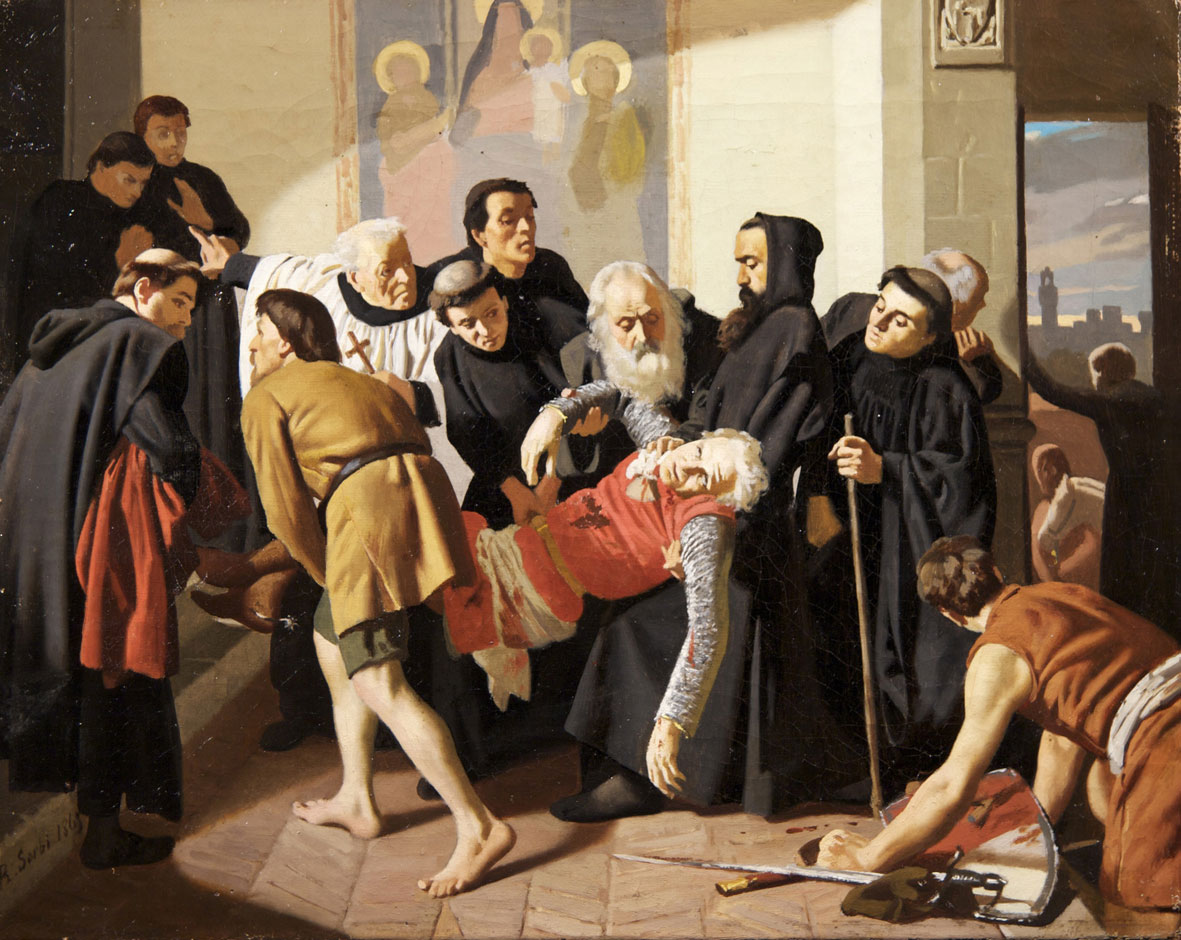|
Corso Donati
Corso Donati was a leader of the Black Guelph faction in 13th- and early 14th- century Florence. Bologna and Pistoia In the late thirteenth century, power in Florence and the other Tuscan cities was divided between the Podestà, an outsider who served as chief magistrate, and the guildmasters. Corso served as Podestà of Bologna in 1283 and 1288, and of Pistoia in 1289. In 1289, as captain of the people in Pistoia, he led a group of soldiers in a cavalry charge at the Battle of Campaldino, in which the Guelphs defeated the Ghibellines and cemented their control over Florence. Leader of the Black Guelphs In 1293, the merchants of Florence, led by Giano della Bella, prevented the nobility from taking the office of guildmaster. Corso led the noble faction which aligned with the working class against the merchants. In 1294 Corso was acquitted of killing a man in a fight; an angry mob came to della Bella seeking justice after the acquittal, but he sent them away whereupon they rioted a ... [...More Info...] [...Related Items...] OR: [Wikipedia] [Google] [Baidu] |
Guelphs And Ghibellines
The Guelphs and Ghibellines (, , ; it, guelfi e ghibellini ) were factions supporting the Pope and the Holy Roman Emperor, respectively, in the Italian city-states of Central Italy and Northern Italy. During the 12th and 13th centuries, rivalry between these two parties formed a particularly important aspect of the internal politics of medieval Italy. The struggle for power between the Papacy and the Holy Roman Empire arose with the Investiture Controversy, which began in 1075, and ended with the Concordat of Worms in 1122. History Origins The Guelph vs Ghibelline conflict initially arose from the division caused by the Investiture Controversy, about whether secular rulers or the pope had the authority to appoint bishops and abbots. Upon the death of Emperor Henry V, of the Salian dynasty, the dukes elected an opponent of his dynasty, Lothair III, as the new emperor. This displeased the Hohenstaufen, who were allied with and related to the old dynasty. Out of fear ... [...More Info...] [...Related Items...] OR: [Wikipedia] [Google] [Baidu] |

.jpg)